Farmer Climate
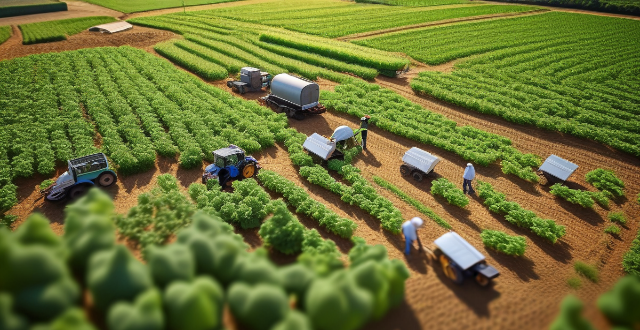
Is climate-smart technology affordable for smallholder farmers ?
Climate-smart technology is essential for farmers to adapt to climate change, but its affordability is a concern for smallholder farmers. Key factors influencing affordability include the cost of technology, access to financing, potential returns on investment, the need for training and education, and market access. Governments can offer subsidies and grants, while microfinance institutions provide tailored loans. Partnerships and research focused on local conditions can also make technology more affordable. Capacity building initiatives like extension services and community workshops further support farmers in adopting these technologies. Addressing these factors can help smallholder farmers benefit from climate-smart technology.
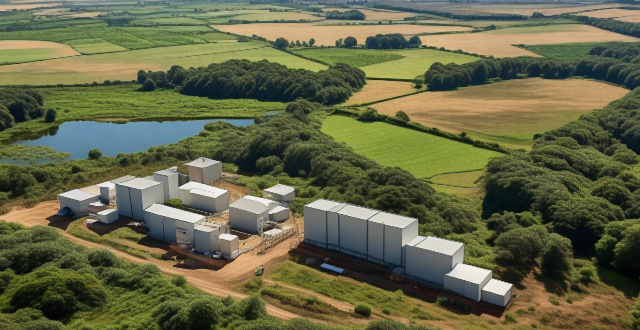
How does climate variability impact agriculture and food security ?
Climate variability significantly impacts agriculture and food security by affecting crop yields, livestock production, and the availability and accessibility of food. Direct impacts include changes in temperature, precipitation, extreme weather events, and CO₂ levels, while indirect impacts involve pest and disease outbreaks, water resource availability, soil quality, ecosystem services, market prices and trade, food accessibility and nutrition, and farmer livelihoods. Mitigation and adaptation strategies such as crop diversification, improved water management, breeding resilient crops, sustainable soil management, early warning systems, insurance and safety nets, policy support, and international cooperation are essential for building a climate-resilient food system.

What are some examples of successful gender-responsive climate policies or initiatives ?
Gender-responsive climate policies and initiatives are crucial for ensuring that everyone can participate fully in efforts to mitigate and adapt to climate change. Successful examples include women's participation in renewable energy programs, gender-responsive disaster risk reduction programs, and gender-responsive agriculture and food security initiatives. These initiatives provide employment opportunities, reduce vulnerabilities, and improve agricultural practices while considering the needs and priorities of both women and men.
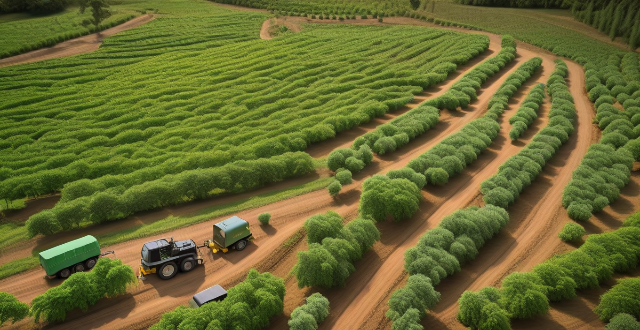
How do different regions around the world cope with climate change-related threats to their food sources ?
Coping with Climate Change: Global Strategies for Food Security explores how various regions are adapting agricultural practices to ensure food security amidst climate change. Asia is focusing on modernizing irrigation systems and researching drought-resistant crops. Africa is promoting small-scale farming techniques and agroforestry. Europe is utilizing precision farming and developing climate-smart crops. North America is practicing rotational grazing and using genetic engineering for more resilient crops. South America is embracing agroecology and community-based adaptation. Australia and Oceania are managing soil salinity issues and heat tolerance research. Policy initiatives include improving access to finance for smallholder farmers and establishing regulatory frameworks. Community-level actions involve farmer training programs and local innovations like community gardens. Technology adoption includes mobile apps for weather information and remote sensing for crop monitoring. The conclusion emphasizes the importance of combining traditional knowledge with modern technology to address climate change and ensure global food security.

What role do women play in addressing climate change ?
Women's Role in Addressing Climate Change: Women play a crucial role in addressing climate change through leadership and advocacy, innovative solutions, community engagement and education, and promoting gender equality and climate justice. They have led international negotiations, founded organizations dedicated to climate action, developed new technologies and business models, engaged in activities such as tree planting and waste reduction, and advocated for gender equality in decision-making processes. Women's contributions are essential to achieving a sustainable future for all.

What are the benefits of using climate-smart technology in agriculture ?
The text discusses the benefits of using climate-smart technology in agriculture, which includes enhanced productivity and yield, improved water management, reduced greenhouse gas emissions, adaptation to climate change, improved soil health, increased resilience to pests and diseases, promotion of agroforestry, and enhanced access to markets. These benefits contribute to sustainable agricultural practices that ensure food security while protecting the environment.

How can we protect children from the adverse effects of climate change ?
Climate change poses significant threats to children's well-being, affecting their health, education, nutrition, and mental health. To protect them, we can focus on education and awareness, health protection, nutrition and food security, mental health support, and infrastructure and urban planning. This includes integrating climate change education into school curriculums, engaging communities in workshops, ensuring safe housing and air quality, improving healthcare accessibility and vaccination programs, establishing school gardens and supporting local farmers, providing counseling services and community support networks, and developing resilient infrastructure and safe public spaces.
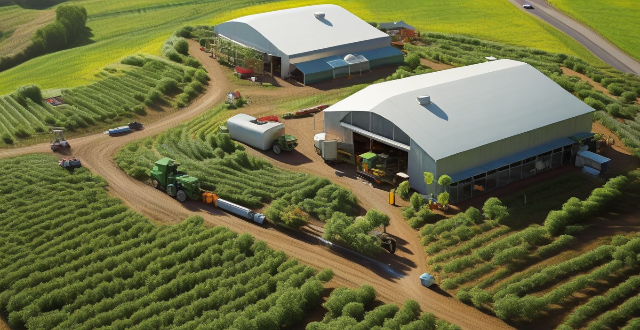
What role do sustainable farming practices play in maintaining food security amidst changing climate conditions ?
Sustainable farming practices are crucial for maintaining food security amidst changing climate conditions. They help farmers adapt to these changes by enhancing soil health, improving water management, promoting crop diversification, and integrating livestock and crop production. These practices also mitigate the impacts of climate change on agriculture by reducing greenhouse gas emissions, promoting biodiversity, and encouraging renewable energy use. Supporting smallholder farmers through training, access to markets, and cooperatives is essential for implementing sustainable practices at a larger scale. Overall, sustainable farming practices are vital for building resilient agricultural systems that can withstand climate change while ensuring food security for future generations.

What measures can be taken to reduce agricultural water consumption ?
Agriculture is the largest consumer of water worldwide, accounting for approximately 70% of global freshwater withdrawals. Reducing agricultural water consumption is crucial for sustainable water management and food security. Here are some measures that can be taken to achieve this goal: 1. **Improved Irrigation Systems** - Drip irrigation delivers water directly to the root zone of plants, reducing waste through evaporation and runoff. - Sprinkler irrigation uses pipes or hoses to spray water over crops, allowing more precise control than surface methods. - Micro-irrigation includes drip tapes and micro-sprayers, which apply water slowly and directly to plant roots. 2. **Water-Saving Technologies** - Soil moisture sensors help farmers determine when and how much to irrigate based on soil moisture levels. - Weather stations provide data on rainfall, temperature, and humidity, enabling farmers to adjust irrigation schedules accordingly. - Automated control systems allow for real-time adjustments in irrigation based on sensor information. 3. **Efficient Crop Management** - Crop rotation helps maintain soil health and reduces water demand by alternating between high and low water-consuming crops. - Planting cover crops protects soil from erosion and improves its ability to retain moisture. - Intercropping leads to efficient use of resources, including water. 4. **Soil Health Management** - Composting adds organic matter, improving soil structure and making it better at holding water. - Minimal tillage helps maintain soil structure, reducing water loss through evaporation. - Mulching covers soil with layers of organic material, conserving moisture by reducing evaporation. 5. **Water Pricing and Policies** - Volumetric pricing encourages conservation among farmers by charging for water based on actual usage. - Subsidies for water-saving technologies promote adoption of water-efficient practices. - Regulations limiting excessive water extraction can drive efficiency improvements. 6. **Rainwater Harvesting** - Catchment systems collect rainwater from roofs or other surfaces for later use in irrigation. - Berms and swales divert runoff into fields or storage areas for future irrigation needs. 7. **Education and Training** - Extension programs provide farmers with knowledge about water-saving techniques through workshops and demonstrations. - Farmer field schools offer hands-on training sessions where farmers learn best practices directly in their fields. 8. **Genetic Improvement of Crops** - Drought-resistant varieties develop crop varieties that require less water without sacrificing yield. - Breeding programs enhance crops through selective breeding to increase their water use efficiency. 9. **Integrated Pest Management (IPM)** - Biological control methods reduce the need for water-intensive pesticide applications using natural predators. - Cultural practices like crop rotation and intercropping also help control pests naturally. 10. **Land Leveling** - Terrace construction on sloping lands helps retain water and prevent runoff. - Land leveling equipment ensures even water distribution during irrigation. By implementing these measures, agriculture can become more water-efficient, ensuring there is enough water available for both current and future generations while maintaining agricultural productivity.

What policies are needed to support small-scale farmers dealing with climate change impacts on agriculture ?
Policies to Support Small-Scale Farmers in Climate Change Impacts on Agriculture: 1. **Financial Support and Insurance Mechanisms**: Provide access to credit facilities and crop insurance schemes tailored for small-scale farmers, along with social safety nets during extreme weather events. 2. **Education and Training Programs**: Organize training sessions on climate-smart agricultural practices and sustainable land management, disseminating information through extension services and mobile technology. 3. **Research and Development**: Support research into climate-resilient crop varieties and facilitate the transfer of appropriate technologies to farmers, promoting precision agriculture where feasible. 4. **Infrastructure and Market Access**: Invest in rural infrastructure like irrigation systems and enhance transportation networks, assisting farmers in accessing diverse markets and providing market information. 5. **Land Tenure and Property Rights**: Ensure secure land rights for small-scale farmers and address gender inequalities in property rights, encouraging collective action through farmer groups and cooperatives. 6. **Policy Coherence and Multi-Sectoral Approach**: Align agricultural policies with national climate change strategies, coordinating efforts across relevant sectors and collaborating with international organizations focused on climate adaptation in agriculture.
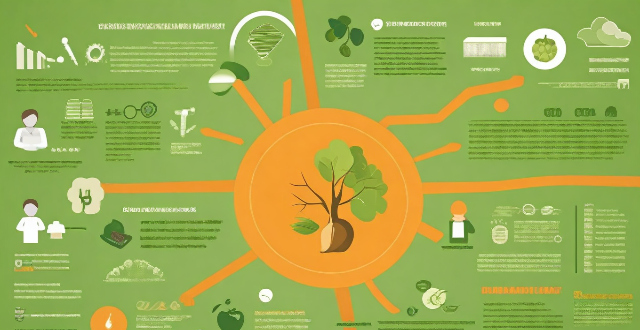
How can we create more green jobs to combat climate change ?
Creating green jobs is a crucial step towards combating climate change. This can be achieved through investing in renewable energy, promoting energy efficiency, supporting sustainable agriculture, and protecting natural habitats. Government incentives, public-private partnerships, skills training programs, green building certifications, transportation infrastructure improvements, industrial process optimization, farmer training programs, local food systems, research and development, conservation work, reforestation initiatives, and sustainable land management are some of the key strategies that can help create more green jobs. By working together, we can ensure a sustainable future for generations to come.
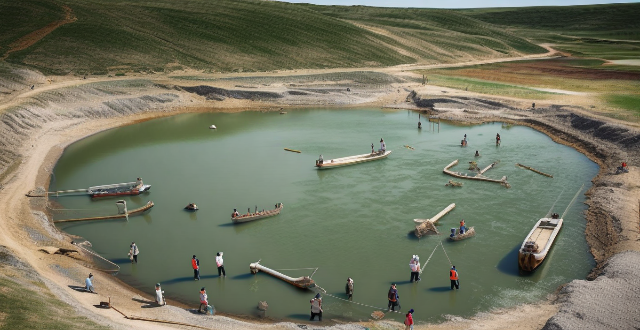
How can agriculture be adapted to cope with the effects of climate change ?
Adapting agriculture to cope with climate change involves various strategies, including crop diversification, water management, soil health improvement, livestock adjustments, use of technology, agroforestry, early warning systems, education, policy support, and carbon sequestration. These measures help maintain yields, ensure food security, and sustain livelihoods amidst changing climatic conditions.

What economic impacts does climate change have on different industries and sectors ?
Climate change has far-reaching economic impacts on various industries and sectors. These impacts can be direct, such as damage to physical assets or production processes, or indirect, such as changes in consumer behavior or market demand. Key areas where the economic effects of climate change are most pronounced include agriculture, energy, tourism, insurance, manufacturing, and finance. Both direct and indirect impacts must be considered when assessing the overall economic implications of a changing climate. It is crucial for businesses, governments, and societies at large to develop strategies that not only mitigate these impacts but also build resilience against future climate shocks.

How does climate information sharing help in mitigating climate change ?
Climate information sharing is vital for mitigating climate change by enabling informed decision-making, raising public awareness, supporting research and innovation, promoting international cooperation, facilitating adaptation strategies, and leveraging technology. It empowers governments, businesses, communities, and individuals to take actions that reduce greenhouse gas emissions and adapt to the changing climate.

What is climate financing and why is it important for combating climate change ?
Climate financing is crucial for mitigating climate change by funding initiatives that promote renewable energy, sustainable infrastructure, and adaptation to climate impacts. It enables international cooperation, drives innovation, supports policy development, and encourages private sector participation. Furthermore, it contributes to achieving global goals and enhances public awareness about climate issues.
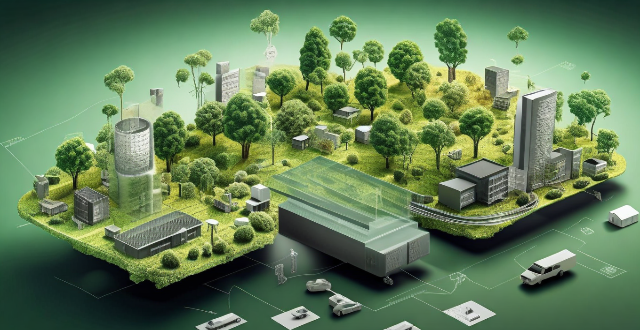
How can climate financing be used to mitigate and adapt to climate change ?
Climate financing is a key mechanism for both mitigating and adapting to the effects of climate change. It involves funding initiatives such as renewable energy projects, green transport, energy efficiency improvements, and research into cleaner technologies for mitigation. For adaptation, it supports infrastructure resilience, agricultural adjustments, health system strengthening, and community-based strategies. International cooperation through global climate funds and technology transfer further enhances the impact of climate finance. Collaboration among various stakeholders is crucial to effectively utilize climate finance for a sustainable future.
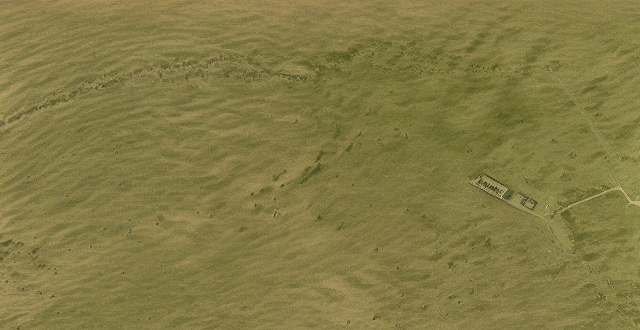
How do climate predictions account for natural climate variability ?
Climate predictions account for natural climate variability by incorporating natural drivers, using past climate records, ensemble modeling, focusing on long-term trends, assessing uncertainties, scenario analysis, and peer review and revision.

What are the implications of ignoring the views of climate skeptics on climate policy ?
Ignoring climate skeptics' views can lead to lack of diversity in thought, potential for misinformation, loss of public trust, opportunity costs, and polarization. Policymakers should consider diverse perspectives and engage with all stakeholders for effective solutions.

How can we differentiate between legitimate climate science and the opinions of climate skeptics ?
This article provides guidance on how to differentiate between legitimate climate science and the opinions of climate skeptics. It emphasizes the importance of looking for peer-reviewed research, checking the source of information, evaluating the evidence, considering the motives of those making claims, and consulting experts in the field. By following these guidelines, individuals can make informed decisions about climate change and contribute to efforts to address this critical issue.
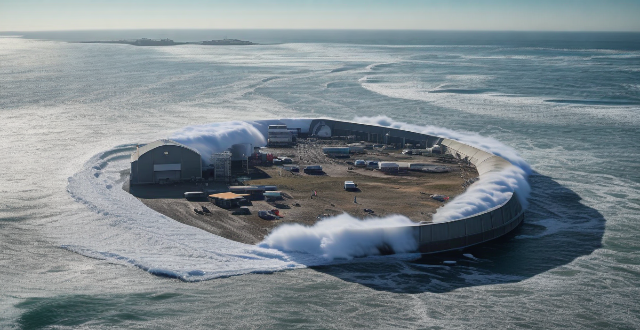
What is a climate refugee ?
Climate refugees are individuals who must relocate due to environmental changes from climate change, such as sea-level rise and extreme weather events. This displacement affects social structures, economies, and cultures, and there is a need for international cooperation and sustainable practices to address the issue. There is currently no specific legal status for climate refugees under international law.
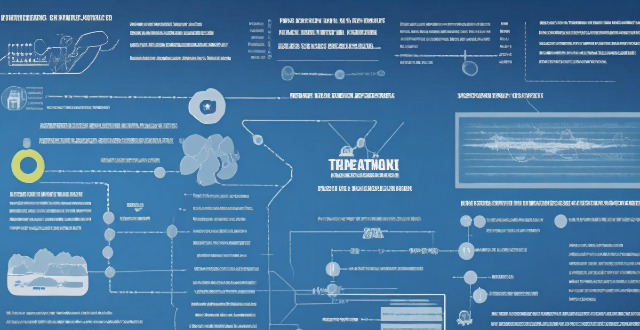
How do international climate agreements influence national climate policy assessments ?
International climate agreements influence national climate policy assessments by setting global goals and targets, providing guidance on best practices, facilitating technology transfer and cooperation, enhancing transparency and accountability, and offering financial support for climate action. Examples of such agreements include the UNFCCC, Kyoto Protocol, and Paris Agreement.
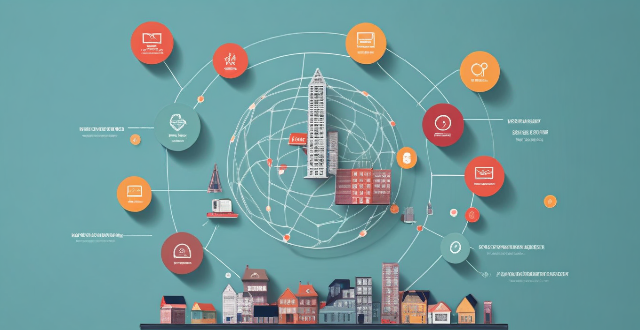
What is the significance of climate finance in achieving the goals of global climate governance ?
Climate finance is vital for achieving global climate governance goals, supporting mitigation, adaptation, sustainable development, innovation, cooperation, transparency, policy integration, capacity building, and private sector engagement.

How can climate resilience help mitigate the impacts of climate change ?
Climate resilience is a crucial strategy for mitigating the effects of climate change. It involves reducing vulnerability, enhancing adaptive capacity, promoting sustainable development practices, and fostering social cohesion. By implementing these strategies, communities can become more resilient and better able to cope with the impacts of climate change.

What is climate financing ?
Climate financing is essential for implementing projects that mitigate climate change and adapt to its impacts. It includes public sector involvement, private sector participation, support from multilateral and bilateral institutions, and innovative mechanisms like climate taxes and crowdfunding platforms. These financial resources are vital in addressing the global challenge of climate change by enabling access to capital for sustainable initiatives.

How do climate summits contribute to global efforts to combat climate change ?
Climate summits play a crucial role in the global fight against climate change by setting targets and goals, encouraging international cooperation, promoting policy and technological innovation, raising awareness and mobilizing action, and financing climate action.

How can climate financing help developing countries ?
Climate financing is essential for developing countries to adapt to and mitigate climate change. It funds infrastructure projects, capacity building, renewable energy, sustainable land use, and research & development. These efforts help build resilient economies and reduce environmental impact.
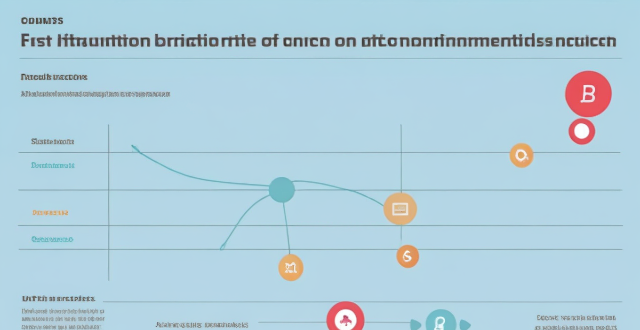
How can we use climate predictions to mitigate the effects of climate change ?
Climate predictions are vital in mitigating climate change impacts. They help in adaptation planning, guiding mitigation strategies, informing policy development, raising awareness, and driving research and innovation. By understanding future climate conditions, we can take proactive measures to reduce the effects of climate change on our environment and society.

How can we address the concerns of climate skeptics and promote climate action ?
The text discusses ways to address concerns of climate skeptics and promote climate action. It emphasizes the importance of understanding their concerns, providing accurate information, building trust in science, addressing perceived costs, and overcoming political beliefs. The author suggests using educational websites, scientific studies, news articles, economic analysis, job creation, efficiency measures, common ground, local impacts, and dialogue to counter misinformation and skepticism about climate change.

What are the risks associated with climate financing ?
Climate financing is vital for mitigating climate change but comes with economic, policy, environmental, social, reputational, and technical risks that must be managed through strong governance and legal frameworks to ensure effectiveness and credibility.